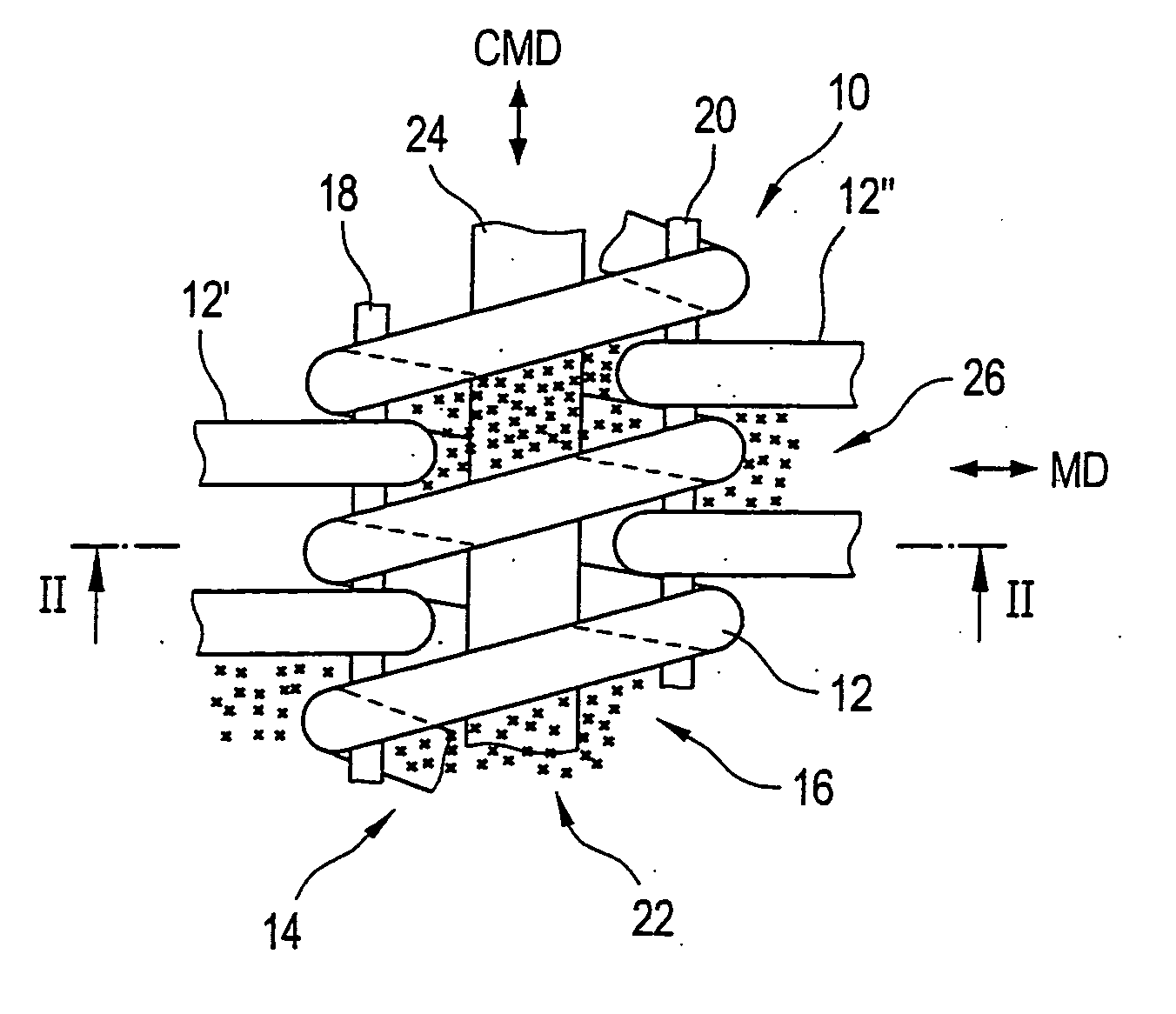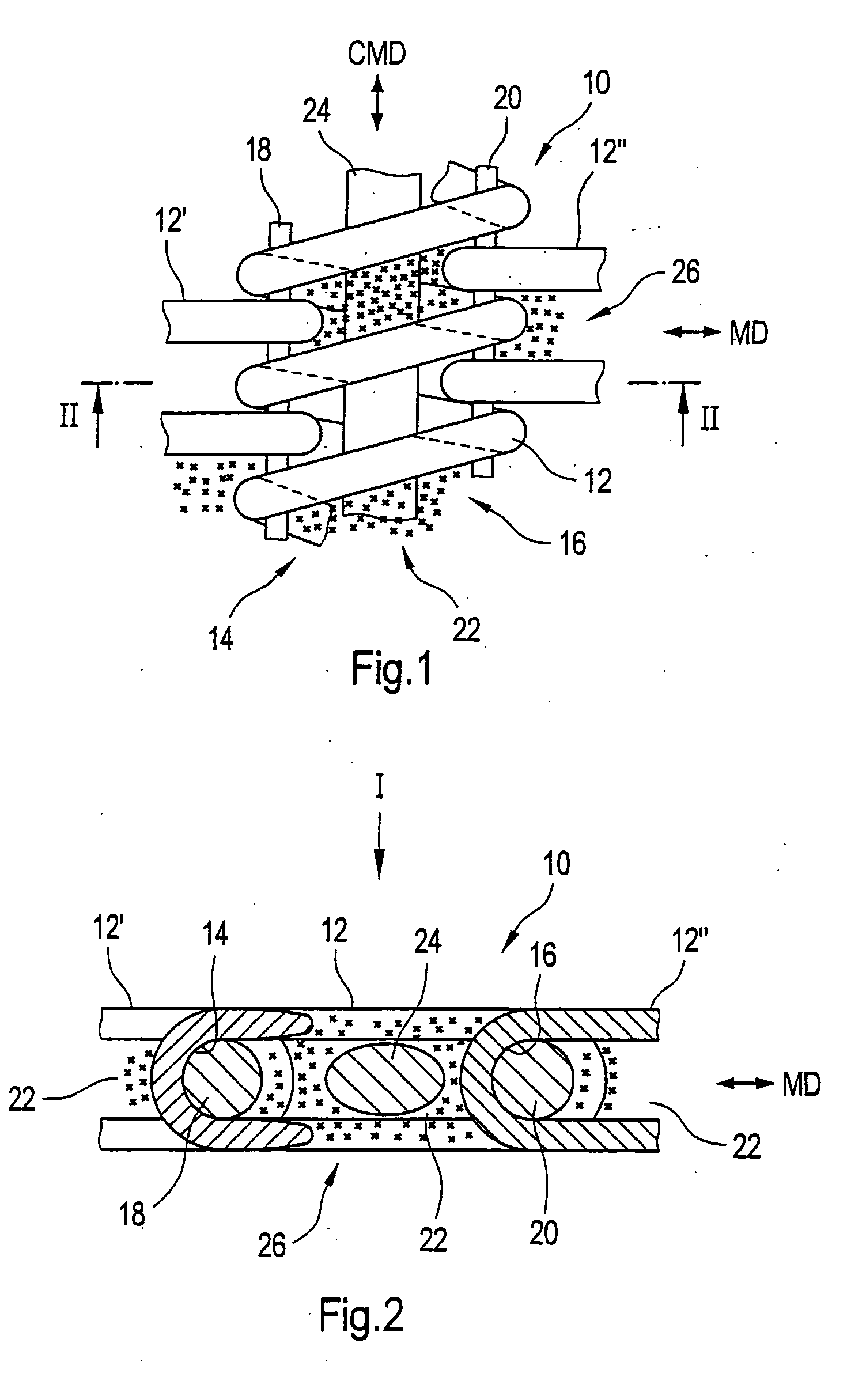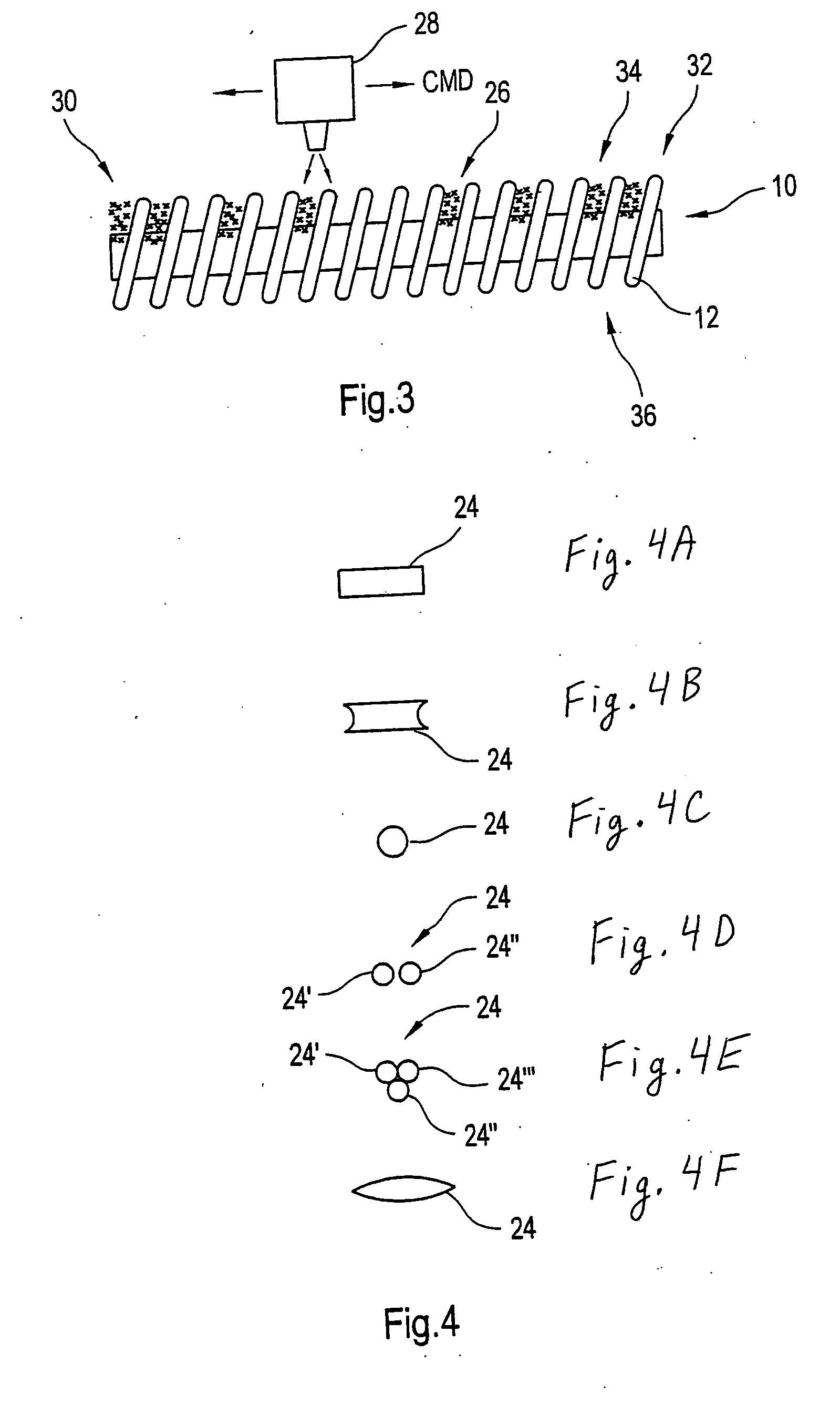Papermachine clothing
a paper machine and clothing technology, applied in the field of fabric, can solve the problems of unfavorable paper quality, undesired change in the permeability of the fabric, so as to achieve uniform permeability of the overall fabric, influence the paper quality, and constant paper quality
- Summary
- Abstract
- Description
- Claims
- Application Information
AI Technical Summary
Benefits of technology
Problems solved by technology
Method used
Image
Examples
Embodiment Construction
[0028] Referring now to the drawings, and more particularly to FIGS. 1 and 2, there is shown a portion of a fabric 10 of the present invention. This fabric 10 for example can be used in the drying section of a paper making machine and in this case constitutes an endless belt.
[0029] The fabric 10 includes a plurality of helically wound coil members 12, 12′, 12″ which are arranged such as to extend in a cross machine direction CMD with their longitudinal axes. Immediately adjacent coil members 12, 12′, and 12″ are arranged in an intermeshing manner. As can be seen from FIG. 1, for example the windings of coil members 12′ and 12″ engage the gaps between the windings of coil member 12 and vice versa. By providing such a mutually intermeshing arrangement of adjacent coil members 12, 12′, and 12″, in the regions of engagement there are formed connecting channels 14, 16. As can be seen in FIG. 2, the connecting channel 14 is defined by both of the coil members 12 and 12′, whereas the conn...
PUM
| Property | Measurement | Unit |
|---|---|---|
| operating pressure | aaaaa | aaaaa |
| density | aaaaa | aaaaa |
| color | aaaaa | aaaaa |
Abstract
Description
Claims
Application Information
 Login to View More
Login to View More - R&D
- Intellectual Property
- Life Sciences
- Materials
- Tech Scout
- Unparalleled Data Quality
- Higher Quality Content
- 60% Fewer Hallucinations
Browse by: Latest US Patents, China's latest patents, Technical Efficacy Thesaurus, Application Domain, Technology Topic, Popular Technical Reports.
© 2025 PatSnap. All rights reserved.Legal|Privacy policy|Modern Slavery Act Transparency Statement|Sitemap|About US| Contact US: help@patsnap.com



